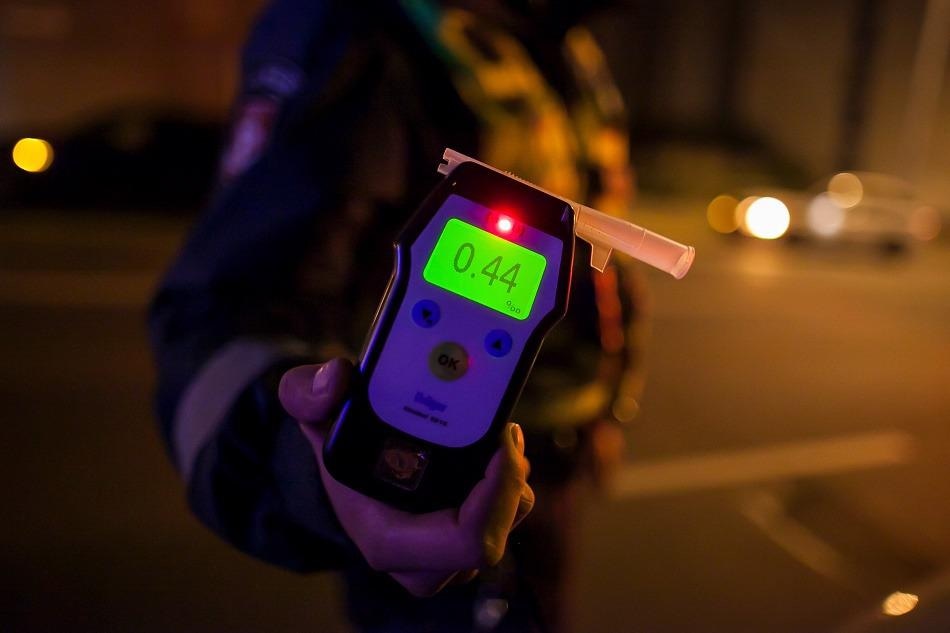As with many other sensors, breathalyzers depend on optimized calibration procedures to deliver the most precise of measurements. All kinds of portable breathalyzer are susceptible to ‘drift.’

Image Credit: Karolis Kavolelis/Shutterstock.com
As a result, calibration must be frequently conducted to ensure good accuracy. This guide explains how to calibrate portable breathalyzers and how often it should be performed to ensure accurate and precise results.
It is useful to understand a bit about how breathalyzers function prior to calibration: all portable breathalyzers are designed to record the user’s blood alcohol content (BAC) by assessing the amount of alcohol vapor present in their breath.
Yet how this analysis is performed can vary depending on the type of sensor a breathalyzer used, which can significantly influence both the measurement accuracy and the rate of drift.
Fuel Cell vs. Semiconductor Breathalyzers
Typically, portable breathalyzers utilize either a fuel cell sensor or a semiconductor sensor. Fuel cell Sensors, also known as electrochemical sensors, utilize reagents that are developed to selectively react with alcohol molecules.3,4
The current generated by this electrochemical reaction is measured, and this measurement can be analyzed to work out the amount of alcohol present.5
Breathalyzers fitted with this type of sensor have the capacity to deliver more accurate measurements than semiconductor sensors regarding alcohol in exhaled air. Yet, these sensors usually come at a greater cost than semiconductor-based breathalyzers.
Semiconductor sensors make use of the fact that certain semiconducting materials undergo a change in electrical resistance when exposed to alcohol vapor. When manufacturing this kind of sensor tin oxide is typically used.
Measuring fluctuations in resistance of a heated tin oxide mesh is a technique good for measuring the alcohol content of exhaled air.1,2 Semiconductor-type breathalyzers are relatively simple and cost-effective to produce, making them common for personal use.
However, these sensors are not always accurate when measuring BAC: these devices are not as precise when compared to those fitted with fuel cell sensors.
How Often Should a Breathalyzer be Calibrated?
There is no straightforward answer to this question as drift rates, unfortunately, vary between devices. Thus, users should always refer to the manufacturer’s specifications to establish the optimum performance.
Semiconductor-based breathalyzers are more susceptible to drift. However, for personal use of both types of devices, manufacturers usually suggest calibrating every 6-12 months or every couple of hundred uses.6,7 Breathalyzers deployed in the workplace or laboratory applications should be calibrated more regularly than this.
In either case, if a breathalyzer produces inconsistent or abnormal results, calibration should be carried out immediately.
The Calibration Process
The two principal calibration methods for breathalyzers are calibration gas mixture and breath alcohol simulation. Both methods function by supplying a known concentration of alcohol of air to the breathalyzer in air or nitrogen.
If the reading on the breathalyzer doesn’t correlate with the known concentration, the breathalyzer’s sensitivity is adjusted accordingly.
A breath alcohol simulator utilizes a liquid solution of ethanol in water (a reference solution for alcohol) to supply the breathalyzer with simulated breath. Conversely, a calibration gas mixture uses a compressed gas canister carrying a known concentration of ethanol in nitrogen.
Selecting accurate calibration references that can be depended upon is vital for precise calibration of breathalyzers. Air Products’ calibration gas mixtures for breathalyzers can be developed with any ethanol concentration for the calibration of workplace, laboratory, or personal applications.
Air Products’ mixtures are produced to the highest standards and are compatible with all major manufacturers of both engine interlocks and handheld units.
References
- Vitz, E. & Chan, H. Computer series, 178: LIMSport VII. Semiconductor gas sensors as GC detectors and ‘breathalysers’. J. Chem. Educ. 72, 920–925 (1995).
- Understanding Breathalyser Sensor Types. Available at: https://www.bactrack.com/. (Accessed: 23rd June 2020)
- Jones, A. W. Electrochemical measurement of breath-alcohol concentration: precision and accuracy in relation to blood levels. Clin. Chim. Acta 146, 175–183 (1985).
- Kutin, O. Comparison of Breathalyser Types. Available at: http://eztuir.ztu.edu.ua/bitstream/handle/123456789/6430/43.pdf (Accessed: 23rd June 2020)
- How does a fuel cell sensor work? - AlcoDigital. Available at: https://www.breathalyzer.co.uk/ufaqs/what-is-the-science-behind-a-fuel-cell-breathalyzer/#:~:text=When%20alcohol%20comes%20in%20contact,converted%20into%20the%20breathalyser%20reading (Accessed: 23rd June 2020)
- Breathalyser Calibration FAQs - Andatech Australia. Available at: https://andatech.com.au/. (Accessed: 23rd June 2020)
- lcoSense Elite 3 // Home Breathalyser // Personal Alcohol Tester. Available at: https://alcosense.co.uk/alcosense-elite-3.html. (Accessed: 23rd June 2020)

This information has been sourced, reviewed and adapted from materials provided by Air Products PLC.
For more information on this source, please visit Air Products PLC.